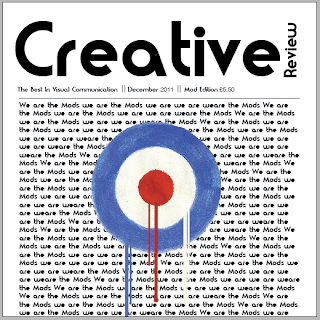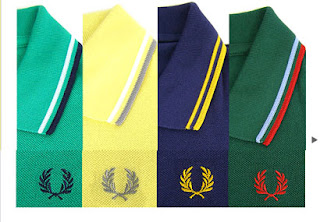This was an image taken for the use of my double page spread. My intentions of the image was to give a more modern Mod feel; the type used within the double page spread will have emphasis through imagery that the Mods are dying out. In the photo im wearing a Fred Perry Polo, Levi Jeans, Harrington Jacket with a pair of shoes. This was the type of clothing wore by Mods in the early 80's during the short revival period. I also have a cigarette in my mouth to also emphasize that many Mods smoked as it was seen to be " cool ". This image was taken in a portrait form so my intentions to have this across a landscape double page spread would not work.
This was another image taken for the use of my double page spread, this time the image is in landscape form which makes it easier to use across both pages. The large amount of space allows room for type to be placed - also having the image in black and white allows type to be readable in most colours.
Here is where I started to play around with what I was going to have on the page spread. I already decided that " We are the Mods " was going to appear in the double page spread in some typographic form - I wanted the phrase to work alongside and with the image. The centre piece was the main piece of type; I made the type into a form of a circle to represent the Lambretta symbol, but, in magazine form this could be a huge error as the crease in the centre of the magazine makes it difficult for type to be readable.
I tried combining type with imagery - here I placed text over the Lambretta symbol, the problem here is that the text wasn't really readable and the image over killed the text.
I wasn't sure if using the Lambretta symbol was going to be to cliche as its one of the most obvious things to have associated with the Mods, so I considered just using the colours that were used in this symbol, that way it would have some form of combination without actually using any imagery.
Here I used the text wrap tool around the pages main image - I think it works quite well along side the image, but the downside is that there is no consistency. I found that magazine spreads tend to be all equal and look very neat. Having this text wrap around the image looks a bit out of proportion and untidy. I think when there is columns it makes the spread look neater like my other indesign spread with the buildings and using the text wrap tool.
I think having the main text on the other side of the page works better, this allows the main image to stand alone which in my opinion works better. I started the text with a dropcap which enlarges the first letter of the paragraph - I think this clashes slightly with the " We are the Mods " type, as the type is quite big. Any other pieces of type that are larger than 10pt size would clash with the main type.
After playing around with the arrangement on the page I found that the main " We are the Mods " type worked really well with the image. I also found the type did not take any effect the image has on the page which then allowed more space for other pieces of type to go on the other side of the page. I thought the main image did look better in black and white as in my opinion it gave a more "Mod" effect, and also because it allows colour to stand off the page more as everything is in greyscale.

This is my final idea for my double page spread, after trying out various ideas as to what to have on my page I think this works best, I found the main type " We are the Mods " worked best alongside the main image, and they both help to compliment each other. On the other half of the page I used " Mod Culture " as the main Header. In my opinion this gives the reader a clear and early insight as to what the page is about - once this is understood I believe the colours used and the imagery will follow in to making this page "Mod" themed. There is also a sub header which follows on to the type below and what its roughly going to be about; this would encourage people to read on. Although the page is very simple I think it works very well as a double page spread, purely because all the type is aligned and tidy - this makes the page look professional.

This is the main piece of type that will appear on my double page spread " We are the Mods " this was a very popular phrase used between the Mods. This was to symbolise that Mods were proud of who they were this is why i saw this as an appropriate piece of type to have on the double page spread. I arranged the type slightly in Illustrator to help it work around the image more rather that it be left aligned.
Underneath the " We are the Mods " I wasn't sure weather to add type or not as this could overkill the page. I asked a few of my classmates for their opinion and they thought that it looked best without the type under " We are the Mods " And that the page looked much better by itself.
Front Cover
After doing some research shown on my other page i've came up with some ideas for the design on my front cover. Initially I want to keep it very simple and allow plenty of space, i was thinking to have the Mod symbol in an illustration form but the first thing that crossed my mind is that would this be a cliche? On the cover I was also deciding to have " Who are the mods? " or " Where are the mods " this links into the double page spread where it has " We are the Mods" and some information about them. I want the front cover to give the slight feel that Mods are fading away and that its a culture thats dying out as the main Mod period was in the 60's then a revival in the 80's since then Mods have been put under the carpet.
This was a painting I did of the Mod symbol, this was the idea i had for the front cover but rather than keep it how it was i wanted to edit the image in some form so that the visual language of the image was that Mods are fading away and are not heard of as much as they once were over 40 years ago.
This was a tutorial i found on Youtube, the tutorial showed me how to add a simple but effective paint drips. I first placed my painted image into Photoshop and then using the paint brush tool clicked on the area i wanted the paint drip to start held shift and dragged the brush down. To make the paint look more effective i then added another additional paint drip along side the other one but this time at a smaller size. Lastly i added a paint dot at the end of every paint drip this gives the effect that its been hand rendered.
This is my final illustrated image for my front cover.
I tried experimenting with what could go on the front cover with the image as there was a lot of plain space so I placed repetitive text behind the symbol which says " We are the mods we are the Mods we are we are we are the Mods" this quote is very common between Mods so its highly relevant to the symbol and the Mod culture overall.
This is my final design for my front cover with the Mod symbol on the front. The reason for putting the paint drips on the image was to simply give the visual communication that the mods are fading away and thats the impression i wanted to give. Many people know what his symbol is and its very iconic thats why I chose it for the front cover of my magazine, this also gives some flow between the pages and some relevance to all the imagery and colour used in my designs.



























































